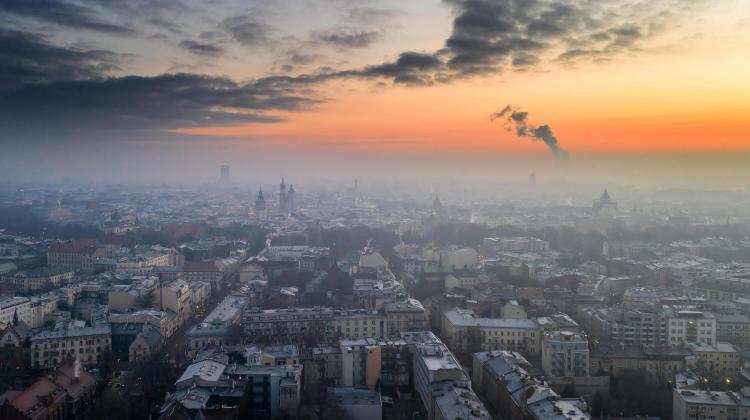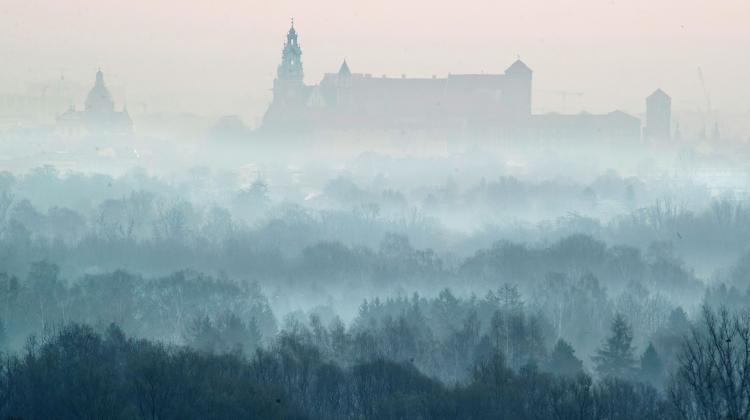Polish smog should have its own classification, says air pollution expert
 Credit: PAP/Łukasz Gągulski 11.01.2021
Credit: PAP/Łukasz Gągulski 11.01.2021
Polish smog is different to that in other cities and should have its own definition, says an air pollution expert from the Lodz University of Technology.
Traditional smog definitions in scientific literature distinguish between two types - that found in London and that in Las Vegas - because of the difference in composition and the conditions in which they form.
Now, Professor Grzegorz Wielgosiński says ‘Polish smog’ should be included as a ‘separate type’ because it is different to the others.
He said: “The primary source of pollution in Polish cities is the combustion of coal and solid fuels in coal furnaces
“The smog that we have been struggling with in Poland in recent weeks is certainly not Los Angeles smog (photochemical smog), which is typical for warm months and temperatures above 30 degrees C.
“Los Angeles smog contains nitrogen oxides, hydrocarbons, and especially ozone and cars are its primarily source.”
He continued: “In London, the famous 1952 smog was caused by burning low-quality coal in fireplaces and house stoves. Its basic components were carbon monoxide, sulphur dioxide and dust. This composition is characteristic of burning coal in fireplaces.
“However, in Poland, in the conditions of the so-called winter smog, we do not observe increased concentrations of sulphur dioxide. Instead, we have a high concentration of dust, especially PM10 and PM2.5, as well as benzopyrene.
“Coals fired in Poland usually contain more nitrogen compounds than English coals. Nitrogen compounds are also present in wood, which is often burned in Polish houses. This causes additional emission of ammonia, which binds sulphur dioxide, creating a secondary inorganic aerosol - dust. Therefore, in winter we do not exceed sulphur dioxide concentrations, but we have very high concentrations of particulate matter.”
He also points out that in Poland smog becomes noticeable in different weather conditions than in the UK as the greatest smog in Poland appears particularly when the frosty Russian high pressure gives us cold air and sunny weather.
Wielgosiński said: “Then, firstly, it is very cold, so everyone is heating up their homes and the emission from domestic fires increases. On the other hand, we have the phenomenon of inversion - the Sun heats the atmosphere, and the surface of the Earth, often covered with snow, is very cold. At night, heat is radiated and temperatures near the ground drop significantly. These are the inversion conditions that promote the development of smog.
“Polish smog is therefore a dust smog forms in winter, in frosty high-pressure weather', the scientist says. In his opinion, this type of smog can be observed not only in Poland, but also in some areas of Turkey.
“The particulate matter in Polish smog is approximately 50-60 percent ammonium sulphate and ammonium nitrate, formed as a result of the reaction of sulphur dioxide and nitrogen oxides with ammonia emitted during combustion. Both compounds are soluble in water and can be washed out of dust and affect water pollution. But these are not the most toxic compounds in smog.”
Another compound found in smog in large amounts is silica (silicon dioxide), also present in soil dust and sand. This compound has an effect on the body and is very permanent.
He said: “The worst thing for organisms, however, are the polycyclic aromatic hydrocarbons in smog. These compounds are classified as persistent organic pollutants that take a very long time to decompose in the environment,” adding that in Poland, the emissions of these aromatic hydrocarbons amount to over 150 tons per year.
These compounds include benzopyrene - a substance with proven high carcinogenicity. Benzopyrene emitted from domestic fires contaminates the soil and enters crops. Smog also contains other polycyclic aromatic hydrocarbons, which may also be a factor that increases the risk of cancer.
To read more about Wielgosiński’s argument, click here: https://doi.org/10.3390/atmos11030277
(PAP)
Author: Ludwika Tomala
lt/ zan/ kap/
tr. RL
Przed dodaniem komentarza prosimy o zapoznanie z Regulaminem forum serwisu Nauka w Polsce.



















